

You can perform advanced disaster recovery on 64-bit Windows XP and Windows Server 2003 using the Client Agent.
To perform disaster recovery
A prompt opens.
A message appears at the bottom of the screen prompting you to press F2 to start Automated System Recovery.
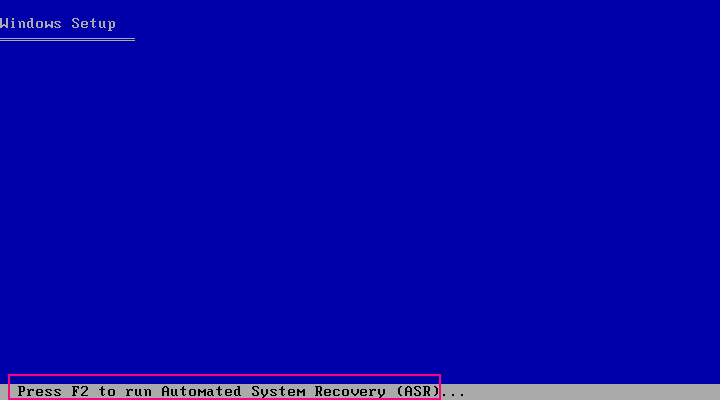
The Windows Automated System Recovery GUI opens.
Important! You must press F2; otherwise, the normal Windows installation procedure starts.
The system and boot partitions are formatted, and the necessary files are copied to the hard drive.
The device drivers and network protocols are installed. The operating system formats the volumes screen.
Important! Do not press Enter, Esc, or Alt-F4 and interrupt while the volumes on your Windows XP, or Windows 2003 are formatted; doing so terminates the formatting process, and the data on these volumes will not be restored.
DRLAUNCH is initiated automatically. It copies the supplied media files and starts the 64-bit Advanced Disaster Recovery Wizard.
ADR GUI ADRMAIN.exe starts executing, and reads the DR information.
For Express Mode:
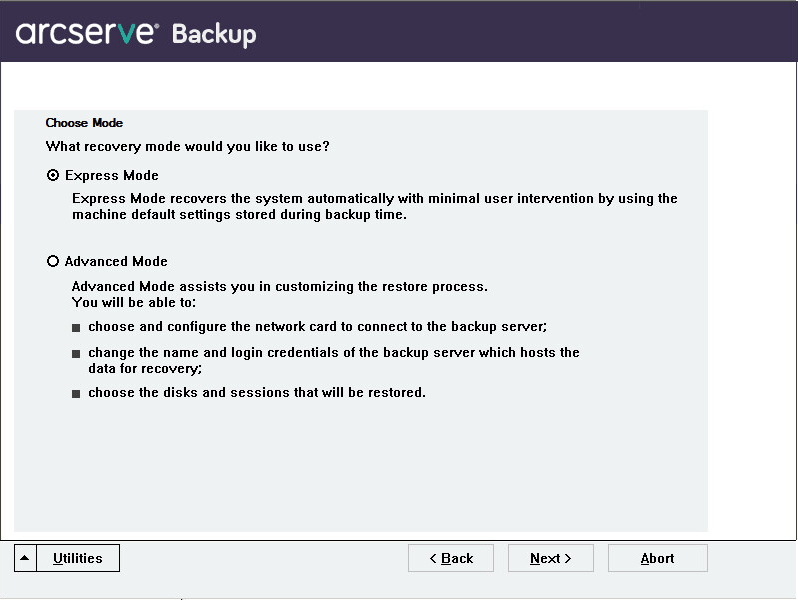
The Enter caroot Password dialog opens.
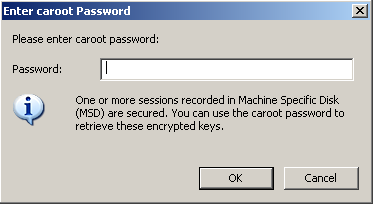
As the disaster recovery session has to be restored during this period, you will be prompted to provide the caroot password because
Note: This password is required to work with saved session password or encryption key to restore encrypted or password protected sessions. Enter the correct caroot password, if necessary, to avoid decryption of each session manually.
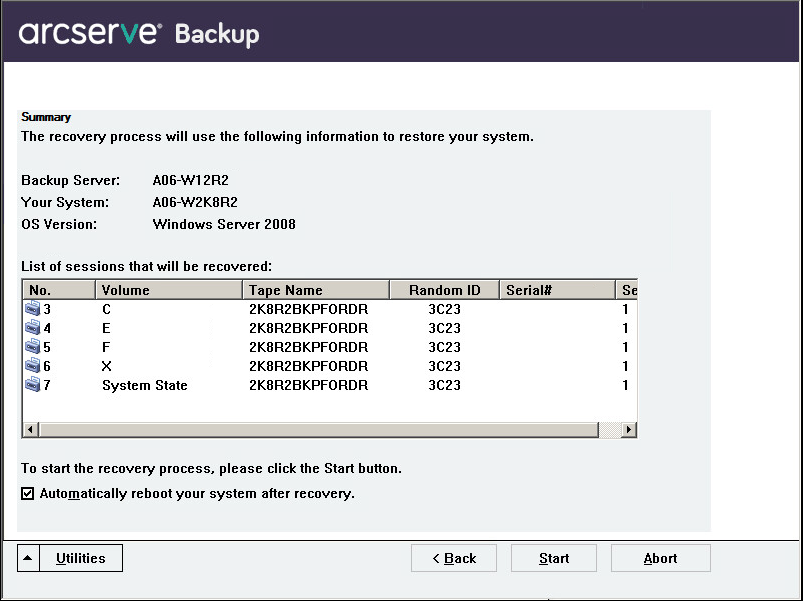
For Advanced Mode:

The Enter caroot Password dialog opens.

The Network connections dialog opens followed by the Session dialog.
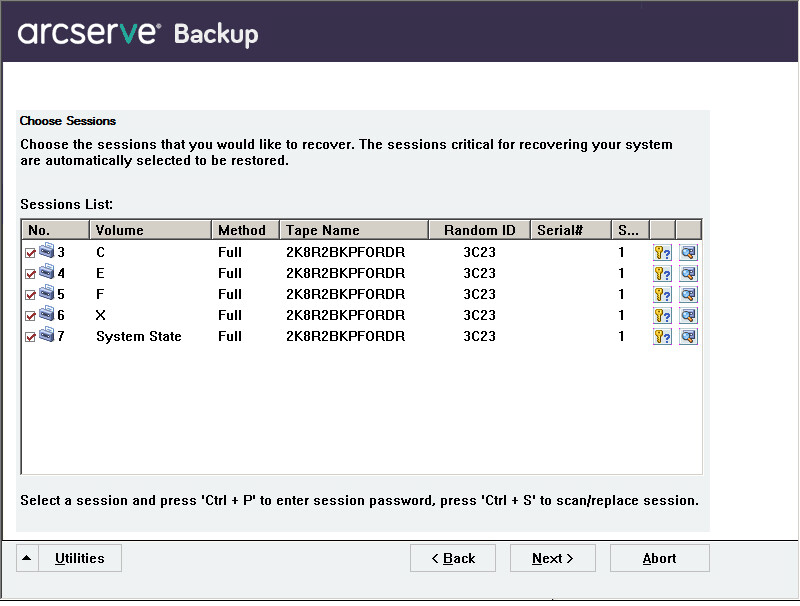
You can enter the password for each session depending on the status of each key at the end of each row in the Session Assign dialog. Types of keys include:
The Summary dialog opens.

The data is copied from the specified sessions to the specified partitions. A progress bar shows the progress of the restore process.
Note: You can run most of the 32-bit Windows programs, such as regedit.exe, from the DOS prompt window. Click Utilities, and select Run to open a Windows command line console window.
The Disaster Recovery process is complete.
Note: You can use the keyboard shortcut Shift+ r on the Disaster Recovery wizard to reboot.
When your computer restarts, it is restored to the state it was in at the time of the last full backup.
Important! If the Arcserve Backup database is installed on this computer and this computer is not the Arcserve Backup primary server, you must run the Arcserve Database Recovery Wizard at this time. For more information about the Arcserve Database Recovery Wizard, see the topic Recover the Arcserve Backup Database Using Arcserve Database Recovery Wizard in the Arcserve Backup Administration Guide.
Note: To run the Install and Reboot options on the Disaster Recovery wizard while using USB backup devices dialogs, use the following keyboard shortcuts:
|
Copyright © 2015 |
|